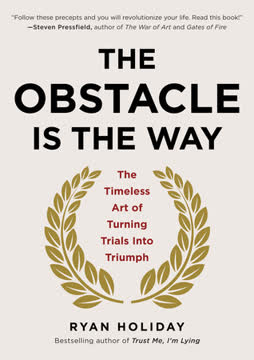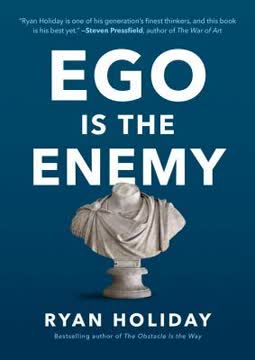ข้อสำคัญ
1. ความต้านทานคือศัตรูของความคิดสร้างสรรค์และการเติบโตส่วนบุคคล
ความต้านทานเป็นพลังที่เป็นพิษที่สุดในโลก มันเป็นต้นเหตุของความทุกข์มากกว่าความยากจน โรคภัยไข้เจ็บ หรือแม้แต่ปัญหาทางเพศ
ความหมายของความต้านทาน: ความต้านทานคือแรงภายในที่มองไม่เห็น ซึ่งขัดขวางความพยายามในการสร้างสรรค์และการเติบโตส่วนบุคคล มันแสดงออกมาในรูปแบบต่าง ๆ เช่น
- การผัดวันประกันพรุ่ง
- ความสงสัยในตัวเอง
- ความกลัว
- การหาเหตุผลมาอ้าง
- การติดสิ่งใดสิ่งหนึ่ง
- การทำลายตัวเอง
การเอาชนะความต้านทาน: เพื่อรับมือกับความต้านทาน
- ยอมรับว่ามันเป็นพลังที่มีอยู่ทั่วไป ไม่ใช่ความล้มเหลวส่วนตัว
- เข้าใจว่ายิ่งโครงการนั้นสำคัญมากเท่าไร ความต้านทานก็จะแข็งแกร่งขึ้นเท่านั้น
- มุ่งมั่นที่จะลงมือทำงานทุกวันโดยไม่สนใจความรู้สึก
- ให้ความสำคัญกับกระบวนการ ไม่ใช่ผลลัพธ์
2. การเป็นมืออาชีพคือกุญแจสำคัญในการเอาชนะความต้านทาน
ช่วงเวลาที่ศิลปินกลายเป็นมืออาชีพนั้นสำคัญเทียบเท่ากับการเกิดของลูกคนแรก เพียงชั่วพริบตา ทุกอย่างก็เปลี่ยนไป
ลักษณะของมืออาชีพ:
- ปรากฏตัวทุกวันไม่ว่าจะเกิดอะไรขึ้น
- มุ่งมั่นในระยะยาว
- รับค่าตอบแทนสำหรับแรงงานของตน
- ไม่ยึดติดกับงานจนเกินไป
- เชี่ยวชาญเทคนิคในงานของตน
- มีอารมณ์ขันเกี่ยวกับงานของตน
มือสมัครเล่นกับมืออาชีพ: มือสมัครเล่นมักยอมให้ความต้านทานชนะ แต่มืออาชีพจะฝ่าฟันมันไปได้ มืออาชีพเข้าใจว่าความกลัวและความสงสัยในตัวเองเป็นส่วนหนึ่งของกระบวนการ ไม่ใช่เหตุผลที่จะยอมแพ้ พวกเขามุ่งเน้นที่การลงมือทำอย่างสม่ำเสมอ แทนที่จะรอแรงบันดาลใจหรือสภาพแวดล้อมที่สมบูรณ์แบบ
3. ความกลัวคือสัญญาณของสิ่งที่สำคัญและต้องเผชิญหน้า
คุณรู้สึกกลัวจนทำอะไรไม่ไหวหรือเปล่า? นั่นเป็นสัญญาณที่ดี ความกลัวเป็นสิ่งดี เช่นเดียวกับความสงสัยในตัวเอง ความกลัวบอกเราว่าสิ่งใดที่เราต้องทำ
ความเข้าใจความกลัว: ความกลัวมักบ่งบอกว่า
- โครงการหรือเป้าหมายนั้นมีความสำคัญ
- เป็นโอกาสสำหรับการเติบโตและเรียนรู้
- มีศักยภาพในการเปลี่ยนแปลงหรือสร้างผลกระทบอย่างมาก
การเผชิญหน้ากับความกลัว: เพื่อเอาชนะความกลัว
- ยอมรับว่ามันเป็นส่วนธรรมชาติของกระบวนการสร้างสรรค์
- ใช้มันเป็นเข็มทิศนำทางไปสู่ผลงานที่สำคัญ
- ลงมือทำแม้จะรู้สึกกลัว
- เข้าใจว่าความกล้าหาญไม่ใช่การไม่มีความกลัว แต่คือการลงมือทำแม้จะกลัว
4. ความเป็นมืออาชีพต้องการวินัย ความมุ่งมั่น และความอดทน
มืออาชีพเรียนรู้มาอย่างดีกว่า เขาเคารพความต้านทาน รู้ว่าถ้าเขายอมแพ้วันนี้ ไม่ว่าเหตุผลจะดูสมเหตุสมผลแค่ไหน โอกาสที่เขาจะยอมแพ้ในวันพรุ่งนี้ก็จะเพิ่มขึ้นเป็นสองเท่า
การพัฒนาความเป็นมืออาชีพ:
- สร้างกิจวัตรการทำงานที่สม่ำเสมอ
- กำหนดขอบเขตที่ชัดเจนระหว่างงานกับชีวิตส่วนตัว
- มุ่งเน้นเป้าหมายระยะยาวแทนความพึงพอใจระยะสั้น
- ฝึกฝนความอดทนและความพากเพียร
- พัฒนาทักษะและความรู้ต่อเนื่อง
ประโยชน์ของความเป็นมืออาชีพ:
- ผลผลิตที่เพิ่มขึ้น
- ความยืดหยุ่นที่มากขึ้นเมื่อเผชิญกับอุปสรรค
- คุณภาพงานที่ดีขึ้น
- ชื่อเสียงและความน่าเชื่อถือที่สูงขึ้น
5. ตัวตนที่แท้จริงคือเสียงเรียกและโชคชะตาของเรา
งานของเราชั่วชีวิตนี้ไม่ใช่การปั้นตัวเองให้เป็นแบบที่เราคิดว่าเราควรจะเป็น แต่คือการค้นหาว่าเราเป็นใครอยู่แล้วและกลายเป็นเช่นนั้น
การค้นหาตัวตนที่แท้จริง:
- ทบทวนความสนใจและความชอบตั้งแต่เด็ก
- สังเกตกิจกรรมที่ทำให้รู้สึกมีความสุขและลื่นไหล
- คิดถึงสิ่งที่คุณจะทำถ้าเงินไม่ใช่ปัญหา
- ระบุค่านิยมและความเชื่อหลักของตัวเอง
การใช้ชีวิตอย่างแท้จริง:
- ให้การงานและการเลือกชีวิตสอดคล้องกับตัวตนที่แท้จริง
- ต่อต้านแรงกดดันจากสังคมให้เป็นไปตามความคาดหวังของผู้อื่น
- ยอมรับพรสวรรค์และมุมมองที่เป็นเอกลักษณ์ของตัวเอง
- ปรับปรุงและแสดงออกเสียงแท้จริงของตัวเองอย่างต่อเนื่อง
6. แรงบันดาลใจมาจากโลกที่สูงขึ้นหรือจิตใต้สำนึก
เมื่อเรานั่งลงทำงานทุกวัน พลังงานจะรวมตัวรอบตัวเรา มิวส์สังเกตเห็นความทุ่มเทของเรา เธออนุมัติ เราได้รับความโปรดปรานในสายตาของเธอ
แหล่งที่มาของแรงบันดาลใจ:
- จิตใต้สำนึก
- โลกทางจิตวิญญาณที่สูงกว่า
- จิตสำนึกร่วมของมนุษยชาติ
- ประสบการณ์และความทรงจำส่วนตัว
การปลูกฝังแรงบันดาลใจ:
- สร้างนิสัยการสร้างสรรค์ที่สม่ำเสมอ
- เปิดพื้นที่สำหรับความเงียบและการไตร่ตรอง
- เปิดรับแนวคิดและประสบการณ์ที่หลากหลาย
- เชื่อมั่นในกระบวนการสร้างสรรค์ แม้แรงบันดาลใจจะดูหายาก
7. ตัวตน ไม่ใช่อีโก้ คือแหล่งของความคิดสร้างสรรค์และการเติบโต
ตัวตนปรารถนาที่จะสร้างสรรค์และพัฒนา อีโก้ชอบให้ทุกอย่างเป็นไปตามที่เป็นอยู่
ตัวตนกับอีโก้:
- ตัวตน: เชื่อมโยงกับสิ่งศักดิ์สิทธิ์ มุ่งสู่การเติบโตและวิวัฒนาการ
- อีโก้: มุ่งเน้นที่การดำรงอยู่ทางวัตถุ ต่อต้านการเปลี่ยนแปลง
การเข้าถึงตัวตน:
- ฝึกสมาธิหรือการมีสติ
- มีส่วนร่วมในกิจกรรมสร้างสรรค์
- แสวงหาประสบการณ์ที่ขยายจิตสำนึก
- ปลูกฝังความตระหนักรู้ในตนเองและการไตร่ตรอง
8. ความสำเร็จมักหมายถึงการออกจากเขตสบายและกลุ่มสังคมเดิม
เรากลัวที่จะค้นพบว่าเรามากกว่าที่คิด มากกว่าที่พ่อแม่ ลูก หรือครูคิด เรากลัวว่าเรามีพรสวรรค์ที่เสียงเล็ก ๆ ในใจบอกเรา
การยอมรับการเติบโต:
- เข้าใจว่าการพัฒนาตัวเองอาจทำให้บางคนรู้สึกแปลกแยก
- พร้อมที่จะเติบโตเกินตัวตนและความสัมพันธ์เก่า ๆ
- แสวงหาชุมชนใหม่ที่สนับสนุนการเติบโตของเรา
- เชื่อมั่นว่าความสัมพันธ์แท้จริงจะเข้ามาแทนที่ความสัมพันธ์ที่สูญเสียไป
การเอาชนะความกลัวความสำเร็จ:
- ยอมรับความกลัวที่จะออกจากพื้นที่ที่คุ้นเคย
- เข้าใจว่าการเติบโตมักต้องเผชิญกับความไม่สบายใจ
- มุ่งเน้นที่ประโยชน์ที่อาจเกิดขึ้นจากความสำเร็จ
- สร้างระบบสนับสนุนที่ส่งเสริมการพัฒนาของคุณ
9. ศิลปินต้องมุ่งเน้นที่งานฝีมือและทำให้กระบวนการสร้างสรรค์ไม่ลึกลับ
มืออาชีพมองงานของเธอเป็นงานฝีมือ ไม่ใช่ศิลปะ ไม่ใช่เพราะเธอเชื่อว่าศิลปะไม่มีมิติลึกลับ ตรงกันข้าม เธอเข้าใจว่าการสร้างสรรค์ทุกอย่างเป็นสิ่งศักดิ์สิทธิ์ แต่เธอไม่ยึดติดกับมัน
การทำให้ความคิดสร้างสรรค์เป็นเรื่องธรรมดา:
- มุ่งเน้นพัฒนาทักษะทางเทคนิค
- สร้างกิจวัตรการทำงานที่สม่ำเสมอ
- แบ่งโครงการให้ง่ายต่อการจัดการ
- ศึกษาเทคนิคของศิลปินที่ประสบความสำเร็จในสาขาของตน
การสร้างสมดุลระหว่างงานฝีมือและแรงบันดาลใจ:
- เคารพแง่มุมลึกลับของความคิดสร้างสรรค์
- เปิดพื้นที่ให้ทั้งการทำงานอย่างมีวินัยและแรงบันดาลใจที่เกิดขึ้นโดยธรรมชาติ
- เข้าใจว่าการชำนาญงานฝีมือช่วยเพิ่มเสรีภาพในการสร้างสรรค์
- เชื่อมั่นว่าความพยายามอย่างสม่ำเสมอจะนำไปสู่ความก้าวหน้า
10. การเรียกมิวส์ช่วยส่งเสริมงานสร้างสรรค์
คุณเคยไปซานตาเฟไหม? ที่นั่นมีวัฒนธรรมย่อยเกี่ยวกับการ "บำบัด" ความคิดคือบรรยากาศที่นั่นมีพลังบำบัด เป็นที่ปลอดภัยให้เราได้รวมตัวและฟื้นฟูตัวเอง
แนวคิดเรื่องมิวส์:
- เป็นตัวแทนของแรงบันดาลใจและความคิดสร้างสรรค์
- การเชื่อมต่อกับโลกที่สูงขึ้นหรือจิตใต้สำนึกร่วม
- วิธีการทำให้กระบวนการสร้างสรรค์เป็นสิ่งที่จับต้องได้และเคารพ
การเรียกมิวส์:
- สร้างพิธีกรรมส่วนตัวก่อนเริ่มงานสร้างสรรค์
- จัดพื้นที่เฉพาะสำหรับงานศิลปะของคุณ
- ใช้สมาธิหรือการจินตนาการเพื่อเชื่อมต่อกับแรงบันดาลใจ
- ปลูกฝังทัศนคติเปิดกว้างและพร้อมรับไอเดียใหม่ ๆ
อัปเดตล่าสุด:
FAQ
What's "The War of Art" about?
- Author's Focus: "The War of Art" by Steven Pressfield is about overcoming the internal barriers that prevent creative individuals from achieving their goals.
- Central Theme: The book identifies "Resistance" as the primary enemy of creativity, which manifests as procrastination, self-doubt, and fear.
- Structure: It is divided into three parts: "Defining the Enemy," "Combating Resistance," and "Beyond Resistance," each offering insights and strategies to conquer creative blocks.
- Purpose: The book aims to inspire and guide artists, writers, and entrepreneurs to push through their internal struggles and realize their creative potential.
Why should I read "The War of Art"?
- Practical Advice: It provides actionable strategies for overcoming procrastination and self-doubt, common issues faced by creatives.
- Inspiration: The book is motivational, encouraging readers to pursue their true calling and not succumb to fear or societal pressures.
- Insightful Concepts: It introduces the concept of "Resistance" as a universal force that hinders creativity, offering a new perspective on personal struggles.
- Empowerment: Reading it can empower you to take control of your creative process and commit to your work with a professional mindset.
What are the key takeaways of "The War of Art"?
- Resistance as the Enemy: Recognize that Resistance is a natural force that opposes creative endeavors and must be confronted daily.
- Turning Pro: Adopt a professional attitude towards your creative work, showing up consistently and treating it with seriousness and dedication.
- Inspiration and the Muse: Understand that inspiration often comes after you start working, not before, and that invoking the Muse can help in the creative process.
- Territorial vs. Hierarchical Thinking: Focus on your work for its own sake (territorial) rather than for external validation (hierarchical).
How does Steven Pressfield define "Resistance"?
- Universal Force: Resistance is described as a destructive force within human nature that opposes any act that might lead to personal growth or creativity.
- Manifestations: It can appear as procrastination, self-doubt, fear, rationalization, and other forms of self-sabotage.
- Internal Origin: Resistance is self-generated and arises from within, often disguised as legitimate reasons not to pursue creative work.
- Impersonal Nature: It is not out to get you personally; it is a natural force that acts objectively, like gravity.
What is the "Turning Pro" concept in "The War of Art"?
- Professional Mindset: Turning Pro means adopting a professional attitude towards your creative work, treating it as a vocation rather than a hobby.
- Commitment: It involves showing up every day, regardless of circumstances, and dedicating yourself fully to your craft.
- Discipline and Routine: Professionals work through fear and Resistance by establishing routines and maintaining discipline.
- Focus on Mastery: The professional focuses on mastering the craft, understanding that success is a by-product of consistent effort.
What role does "Inspiration" play in "The War of Art"?
- Result of Work: Inspiration is seen as a result of consistent work rather than a prerequisite for starting.
- Invocation of the Muse: Pressfield suggests invoking the Muse, a metaphor for divine inspiration, to aid in the creative process.
- Concentration of Power: When you sit down to work, power concentrates around you, attracting ideas and insights.
- Higher Realm: Inspiration is linked to a higher realm, suggesting that creativity is a divine or spiritual process.
How does "The War of Art" address procrastination?
- Common Manifestation: Procrastination is identified as the most common form of Resistance, often rationalized as harmless.
- Habitual Nature: It can become a habit, leading to a lifetime of unfulfilled potential and regret.
- Immediate Action: The book emphasizes the power of starting immediately, as every moment holds the potential to change your life.
- Overcoming Procrastination: The key is to recognize it as Resistance and to act in spite of it, committing to your work daily.
What are the best quotes from "The War of Art" and what do they mean?
- "Resistance is the most toxic force on the planet." This highlights the destructive power of Resistance in preventing individuals from achieving their potential.
- "The more important a call or action is to our soul’s evolution, the more Resistance we will feel toward pursuing it." This suggests that the level of Resistance is directly proportional to the importance of the task.
- "The professional loves it so much he dedicates his life to it." This emphasizes the commitment and dedication required to overcome Resistance and succeed in creative endeavors.
- "When we sit down each day and do our work, power concentrates around us." This illustrates the idea that consistent effort attracts inspiration and creative energy.
How does "The War of Art" differentiate between "Territory" and "Hierarchy"?
- Territorial Orientation: Working territorially means focusing on your work for its own sake, deriving satisfaction from the act itself.
- Hierarchical Orientation: Working hierarchically involves seeking external validation and defining success by others' opinions.
- Sustenance from Territory: A territory provides sustenance and fulfillment without external input, while hierarchy can lead to insecurity and dependence on others.
- Creative Focus: The book advocates for a territorial approach, encouraging artists to concentrate on their craft rather than external recognition.
What is the significance of "The Higher Realm" in "The War of Art"?
- Source of Inspiration: The Higher Realm is where inspiration and creativity originate, a place beyond the material world.
- Divine Assistance: Pressfield suggests that unseen forces, like muses or angels, support and sustain creative efforts.
- Connection to the Self: The Higher Realm is linked to the Self, the part of us that is connected to the divine and seeks to create.
- Spiritual Dimension: Creativity is portrayed as a spiritual journey, with the Higher Realm providing guidance and insight.
How does "The War of Art" suggest dealing with fear?
- Fear as an Indicator: Fear is seen as a sign of what we must do, indicating the importance of the task to our soul's growth.
- Direct Proportion: The more fear we feel, the more significant the task is to our personal evolution.
- Acting Despite Fear: The book encourages acting in the face of fear, understanding that it is a natural part of the creative process.
- Fear of Success: It also addresses the fear of success, which can be as paralyzing as the fear of failure, urging readers to embrace their potential.
What is the role of "Self" and "Ego" in "The War of Art"?
- Ego's Beliefs: The Ego is concerned with material existence, self-preservation, and external validation, often hindering creative efforts.
- Self's Connection: The Self is connected to the divine, seeking growth, creativity, and unity with others.
- Conflict: The Ego and the Self are in constant conflict, with the Ego producing Resistance to maintain the status quo.
- Creative Alignment: Aligning with the Self allows for true creative expression, as it is the source of inspiration and authenticity.
รีวิว
The War of Art ได้รับเสียงวิจารณ์ที่หลากหลาย บางคนชื่นชมว่าเป็นแรงกระตุ้นที่ทรงพลังในการฝ่าฟันอุปสรรคทางความคิดสร้างสรรค์ พร้อมคำแนะนำที่ใช้ได้จริงเกี่ยวกับวินัยและความเป็นมืออาชีพ ขณะที่บางคนกลับมองว่าหนังสือมีเนื้อหาซ้ำซาก ขาดหลักฐานรองรับ และคำแนะนำบางอย่างอาจก่อให้เกิดผลเสีย หลายคนเห็นว่าสองบทแรกให้ความรู้ลึกซึ้ง แต่ไม่ชอบส่วนที่สามซึ่งมีเนื้อหาเชิงจิตวิญญาณ ผู้อ่านส่วนใหญ่ชื่นชมความตรงไปตรงมาและสไตล์การเขียนที่กระชับของเพรสฟิลด์ แม้บางคนจะรู้สึกว่าน้ำเสียงของเขาดูตัดสินผู้อื่น ข้อความสำคัญของหนังสือเรื่องการเอาชนะ "ความต้านทาน" ยังคงสร้างแรงบันดาลใจให้กับผู้สร้างสรรค์หลายคน แม้จะมีประเด็นที่ถกเถียงกันอยู่ก็ตาม













